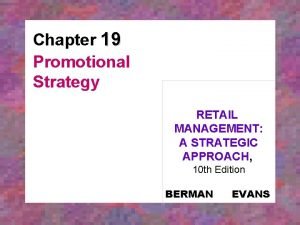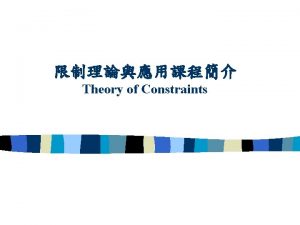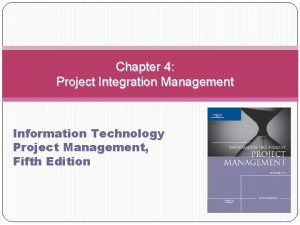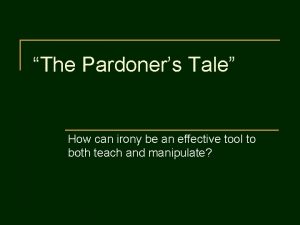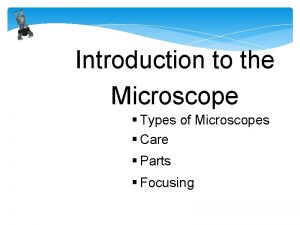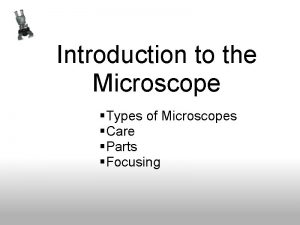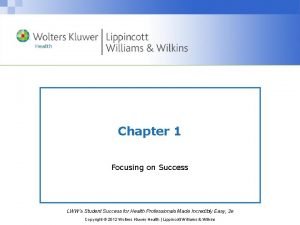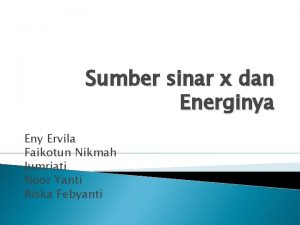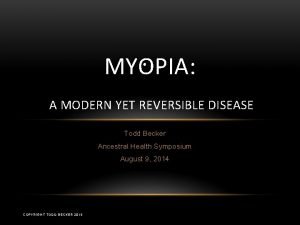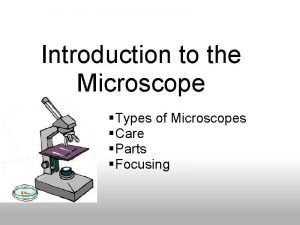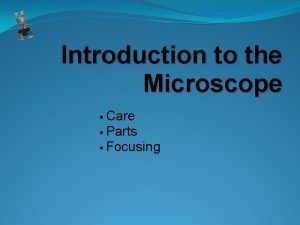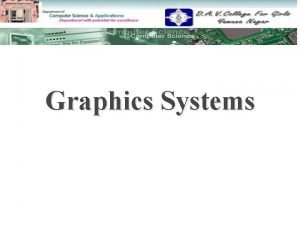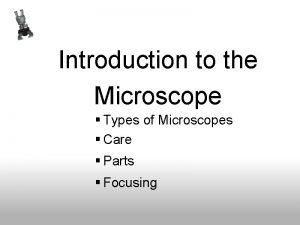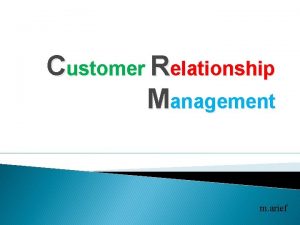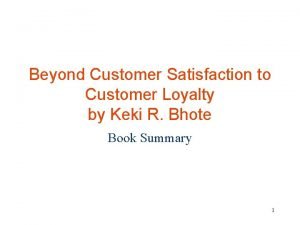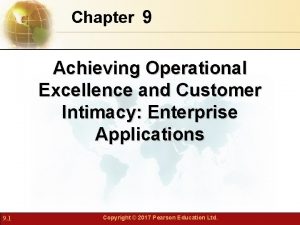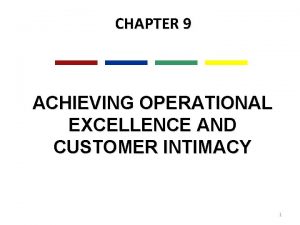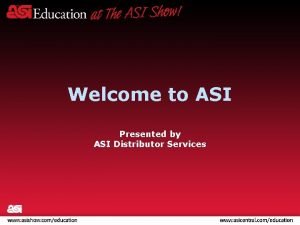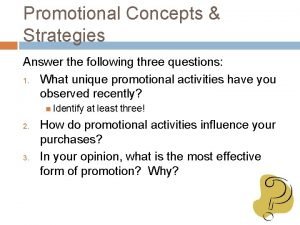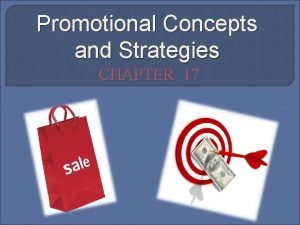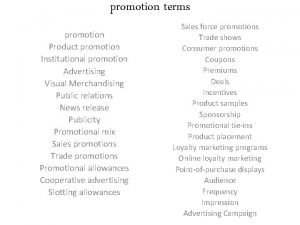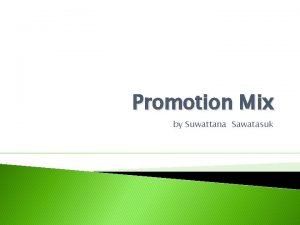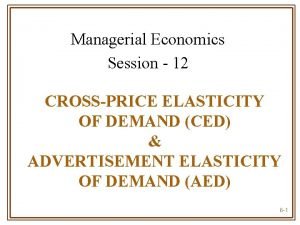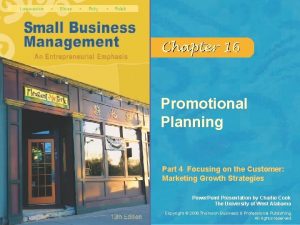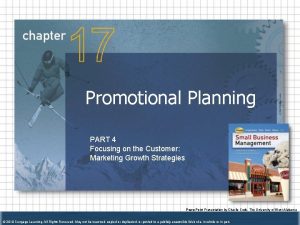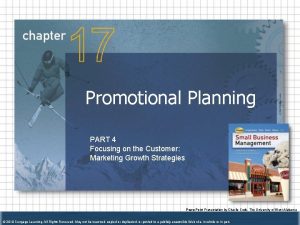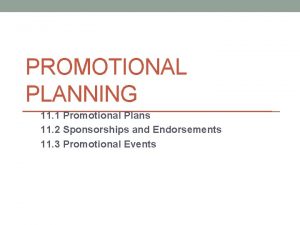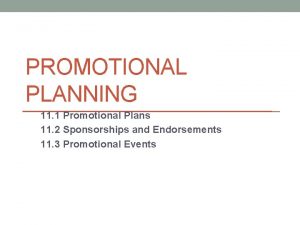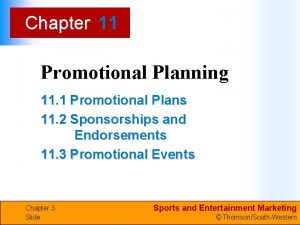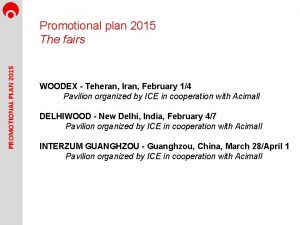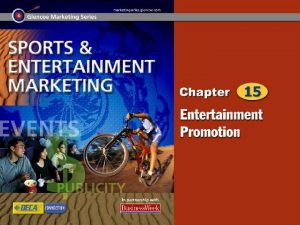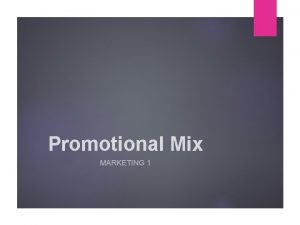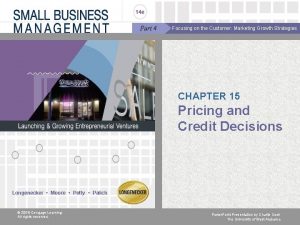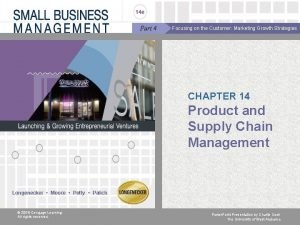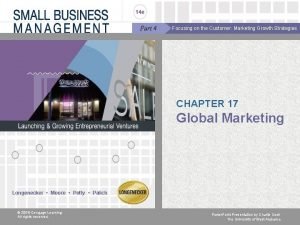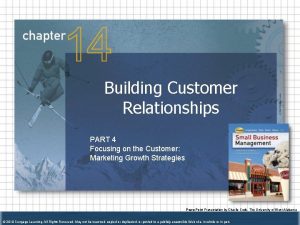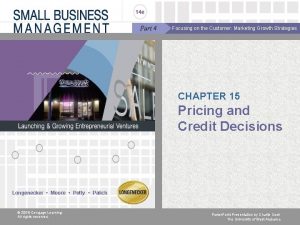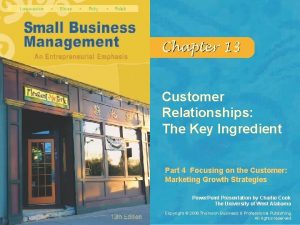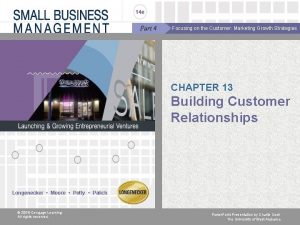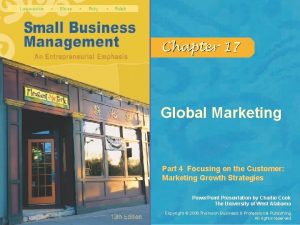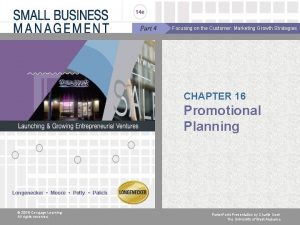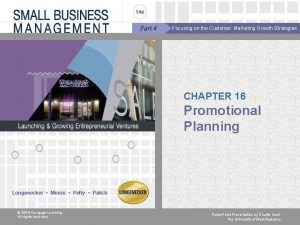Promotional Planning PART 4 Focusing on the Customer



































- Slides: 35

Promotional Planning PART 4 Focusing on the Customer: Marketing Growth Strategies Power. Point Presentation by Charlie Cook, The University of West Alabama © 2010 Cengage Learning. All Rights Reserved. May not be scanned, copied or duplicated, or posted to a publicly accessible Web site, in whole or in part.

Looking Ahead After studying this chapter, you should be able to: 1. Describe the communication process and the factors determining a promotional mix. 2. Explain methods of determining the appropriate level of promotional expenditures. 3. Describe personal selling activities. 4. Identify advertising options for a small business. 5. Discuss the use of sales promotional tools. 17– 2 © 2010 Cengage Learning. All Rights Reserved. May not be scanned, copied or duplicated, or posted to a publicly accessible Web site, in whole or in part.

Promotion: Getting the Message Across Personal Selling Advertising Marketing communications that inform and persuade consumers Sales Promotional Tools 17– 3 © 2010 Cengage Learning. All Rights Reserved. May not be scanned, copied or duplicated, or posted to a publicly accessible Web site, in whole or in part.

The Communication Process in Promotion • Communication Process Components Ø Source—the message sender Ø Channel—the path the message travels Ø Receiver—the recipient of the message • Forms of Promotional Communication Ø Nonpersonal—advertising Ø Personal—personal selling Ø Special forms—sales promotion 17– 4 © 2010 Cengage Learning. All Rights Reserved. May not be scanned, copied or duplicated, or posted to a publicly accessible Web site, in whole or in part.

Exhibit 17. 1 Similarity of Personal and Small Business Communication Processes 17– 5 © 2010 Cengage Learning. All Rights Reserved. May not be scanned, copied or duplicated, or posted to a publicly accessible Web site, in whole or in part.

Promotional Communications • Promotional Mix Ø A blend of nonpersonal, and special forms for communication techniques aimed at a target market. Ø Makeup of the mix is determined by: v Geographical nature of target market v Size of promotional budget v Product’s characteristics 17– 6 © 2010 Cengage Learning. All Rights Reserved. May not be scanned, copied or duplicated, or posted to a publicly accessible Web site, in whole or in part.

Determining the Promotional Budget • “How much should a small business spend on promotion? ” 1. Allocating a percentage of sales 2. Deciding how much can be spared 3. Spending as much as the competition 4. Determining what it takes to do the job 17– 7 © 2010 Cengage Learning. All Rights Reserved. May not be scanned, copied or duplicated, or posted to a publicly accessible Web site, in whole or in part.

Exhibit 17. 2 Four-Step Method for Determining a Promotional Budget 17– 8 © 2010 Cengage Learning. All Rights Reserved. May not be scanned, copied or duplicated, or posted to a publicly accessible Web site, in whole or in part.

Comparing Alternative Promotion Expense Estimates START Compute WTDJ Proceed to develop promotion at WTDJ level Key Terms: WTDJ: What it will take to do the job APS: A percentage of sales YES Is WTDJ equal to or less than others? WCS: What can be spared ACS: As much as the competition spends NO Compute average of WTDJ, APS, WCS, and ACS Compare WCS with computed average Proceed to develop promotion at average level YES Is WCS equal to or greater than average? NO Seek additional funds to supplement promotion 17– 9 © 2010 Cengage Learning. All Rights Reserved. May not be scanned, copied or duplicated, or posted to a publicly accessible Web site, in whole or in part.

Personal Selling in the Small Firm • Personal Selling Ø A sales presentation (promotion) delivered in a one- on-one manner. Ø Requires: v v v Product knowledge Well-prepared sales presentation Ability to build good will 17– 10 © 2010 Cengage Learning. All Rights Reserved. May not be scanned, copied or duplicated, or posted to a publicly accessible Web site, in whole or in part.

Importance of Product Knowledge • Salespersons use product knowledge to: Ø Successfully educate customers about the product’s advantages, uses, and limitations. Ø Answer customer questions and counter customer objections. • Personal selling becomes order-taking when a salesperson lacks product knowledge. 17– 11 © 2010 Cengage Learning. All Rights Reserved. May not be scanned, copied or duplicated, or posted to a publicly accessible Web site, in whole or in part.

Personal Selling: Prospecting • Prospecting Ø A systematic process of continually looking for new customers • Prospecting Techniques Ø Personal referrals v Salesperson initiates customer contact through referral by another party known to the customer. Ø Impersonal referrals v Information on potential new customers developed from public records and published sources. 17– 12 © 2010 Cengage Learning. All Rights Reserved. May not be scanned, copied or duplicated, or posted to a publicly accessible Web site, in whole or in part.

Personal Selling: Prospecting (cont’d) • Prospecting Techniques (cont’d) Ø Marketer-initiated contacts v Market surveys are used to identify prospects Ø Customer-initiated contacts v Potential customers are identified through their contacts with the firm. 17– 13 © 2010 Cengage Learning. All Rights Reserved. May not be scanned, copied or duplicated, or posted to a publicly accessible Web site, in whole or in part.

Practicing the Sales Presentation • Improves the salesperson’s success rate. • Prepares salesperson for objections: Ø Price, product, timing, source, service, or need. • Techniques for dealing with objections: Ø Direct denial Ø Indirect denial Ø Empathetic response Ø Compensation method Ø Pass-up method Ø Find true objection Ø Follow up and follow through 17– 14 © 2010 Cengage Learning. All Rights Reserved. May not be scanned, copied or duplicated, or posted to a publicly accessible Web site, in whole or in part.

Overcoming Customer Objections I had problems with a similar product before and don’t want to go through that again! Yes, I understand your attitude, but have you considered. . . ? I’m too busy. That’s why I want to explain how I can save you time by. . . I like what you have said, but I need to wait. Let’s figure how much you can save by acting now. Your product sounds just like your competitor’s. There are similarities, but we have. . . at a better price. I’m not sure I can risk a changeover to your product. Let me tell you how a competitor decided to buy from me. 17– 15 © 2010 Cengage Learning. All Rights Reserved. May not be scanned, copied or duplicated, or posted to a publicly accessible Web site, in whole or in part.

Making the Sales Presentation • Adapting sales approach to customers’ needs: Ø Avoid a “canned” sales talk. Ø Speak the customer’s “language”. Ø Answer every objection explicitly and adequately. Ø Be enthusiastic, friendly, and persistent. Ø Be personally supportive of the customer. 17– 16 © 2010 Cengage Learning. All Rights Reserved. May not be scanned, copied or duplicated, or posted to a publicly accessible Web site, in whole or in part.

Customer Goodwill and Relationship Selling • Relationship Selling Ø Building customer goodwill for future sales to satisfied customers through: v Maintaining a good personal appearance. v Having a pleasant personality. v Using professional etiquette in customer contacts. v Understanding the customer’s point of view. v Maintaining ethical standards in the relationship. 17– 17 © 2010 Cengage Learning. All Rights Reserved. May not be scanned, copied or duplicated, or posted to a publicly accessible Web site, in whole or in part.

Cost Control in Personal Selling • Reducing Selling Costs Ø Efficiently and economically schedule sales calls Ø Push products that contribute to seller’s cost economies Ø Emphasize sales of high-margin products Ø Partner with outside sales and marketing representatives 17– 18 © 2010 Cengage Learning. All Rights Reserved. May not be scanned, copied or duplicated, or posted to a publicly accessible Web site, in whole or in part.

Compensation for Salespeople • Nonfinancial Rewards Ø Personal recognition of employees by the firm Plaques and “Employee of the Month” awards v Providing “perks” to superior performers. Ø Personal satisfaction drawn by salespersons from doing their work well. v 17– 19 © 2010 Cengage Learning. All Rights Reserved. May not be scanned, copied or duplicated, or posted to a publicly accessible Web site, in whole or in part.

Compensating Salespeople • Financial Rewards Ø Commissions v v Compensation paid as percentage of sales productivity. Strong sales motivator Ø Straight salary v Compensation paid regardless of sales made. Ø Combination of commissions and salary v Balance of two compensation forms is adjusted to provide an increasing proportion of commission as salesperson gains experience. 17– 20 © 2010 Cengage Learning. All Rights Reserved. May not be scanned, copied or duplicated, or posted to a publicly accessible Web site, in whole or in part.

Advertising Practices for Small Firms • Advertising Ø The impersonal presentation of a business idea through mass media. • Advertising Objectives Ø To sell by informing, persuading, and reminding. Ø To serve as a complement to product quality and efficient service. Ø To properly reflect changes in customer needs and preferences. 17– 21 © 2010 Cengage Learning. All Rights Reserved. May not be scanned, copied or duplicated, or posted to a publicly accessible Web site, in whole or in part.

Types of Advertising • Product Advertising Ø The presentation of a business idea designed to make potential customers aware of a specific product or service and create a desire for it. • Institutional Advertising Ø The presentation of information about a particular firm, designed to enhance the firm’s image. 17– 22 © 2010 Cengage Learning. All Rights Reserved. May not be scanned, copied or duplicated, or posted to a publicly accessible Web site, in whole or in part.

Obtaining Assistance with Advertising • Advertising Agencies Ø Furnish design, artwork, and copy for ads Ø Evaluate/recommend media with “pulling power” Ø Evaluate the effectiveness of advertising appeals Ø Advise on promotion and merchandise displays Ø Conduct market sampling studies Ø Furnish mailing lists • Other Sources Ø Suppliers Ø Trade Associations 17– 23 © 2010 Cengage Learning. All Rights Reserved. May not be scanned, copied or duplicated, or posted to a publicly accessible Web site, in whole or in part.

Advertising Decision Factors • Frequency of Advertising Ø With regularity for effectiveness and continuity v v Introduction of new uses for established products Introduction of new products and services • Where to Advertise Ø Appropriate media mix determined by: v v v Geographical area for target market coverage Customer type targeted by advertising campaign Advertising media customarily used by industry Type of business Web advertising on the World Wide Web (Internet) 17– 24 © 2010 Cengage Learning. All Rights Reserved. May not be scanned, copied or duplicated, or posted to a publicly accessible Web site, in whole or in part.

Exhibit 17. 3 Advantages and Disadvantages of Major Advertising Media Source: Charles W. Lamb, Jr. , Joseph F. Hair, Jr. , and Carl Mc. Daniel, Marketing, 9 th ed. (Cincinnati: South-Western, 2008), p. 475. © 2010 Cengage Learning. All Rights Reserved. May not be scanned, copied or duplicated, or posted to a publicly accessible Web site, in whole or in part. 17– 25

Web Advertising • Basic Web Promotions Ø Banner ads v Advertisements that appear across a Web page, often as moving rectangular strips Ø Pop-up ads v Advertisements that burst open on computer screens Ø Direct e-mail promotion v v Advertising delivered by means of electronic mail Spam: unsolicited e-mail 17– 26 © 2010 Cengage Learning. All Rights Reserved. May not be scanned, copied or duplicated, or posted to a publicly accessible Web site, in whole or in part.

Web Advertising (cont’d) • Basic Web Promotions (cont’d) Ø Web sponsorships v A type of advertising in which the firm pays another organization for the right to be part of that organization’s Web page. Ø Linkages v One firm pays another to include a click-on (click-through) advertising link on its Web site. 17– 27 © 2010 Cengage Learning. All Rights Reserved. May not be scanned, copied or duplicated, or posted to a publicly accessible Web site, in whole or in part.

Web Advertising (cont’d) • Basic Web Promotions (cont’d) Ø A corporate Web site on the Internet v v v Creating and registering a site name Building a user-friendly Web site Promoting the Web site Ø Blogs v An interactive website in which an individual can maintain a personal online journal, post comments and reflections, and provide hyperlinks. 17– 28 © 2010 Cengage Learning. All Rights Reserved. May not be scanned, copied or duplicated, or posted to a publicly accessible Web site, in whole or in part.

Exhibit 17. 4 Website Design Tips Tip 1: Know your purpose Tip 2: Think like your customer Tip 3: Make it easy to navigate Tip 4: Reduce the load time Tip 5: Avoid surprises Tip 6: Document everything Sources: Gary Klingsheim, “How to Create an Attractive, User Friendly Website, ” March 20, 2009, http: //www. webdesign. org, accessed April 11, 2009; and http: //www. usability. gov, accessed June 30, 2009. © 2010 Cengage Learning. All Rights Reserved. May not be scanned, copied or duplicated, or posted to a publicly accessible Web site, in whole or in part. 17– 29

Exhibit 17. 5 Options for Getting Your Website Listed in Search Engines 1. Use a free submission service 2. Use a low-cost, automated submission service 3. Do it yourself by manually submitting your website to individual search engines 4. Use a professional search engine consultant 5. Use submission software 6. Pay for inclusion. Sources: Adapted from the Internet Marketing Center’s website, http: //www. marketingtips. com/newsletters/ search-engines/search-engine-strategies. html, accessed July 13, 2007; and Joe Burns, “So, You Want to Register Your Pages, Huh? ” http: //www. htmlgoodies. com, accessed April 11, 2009. © 2010 Cengage Learning. All Rights Reserved. May not be scanned, copied or duplicated, or posted to a publicly accessible Web site, in whole or in part. 17– 30

Sales Promotional Tools • Sales Promotion Ø An inclusive term for any promotional techniques that are neither personal selling or advertising v Used in combination with personal selling and advertising. • Specialties Ø Tangible and enduring functional items of worth distributed personally to recipients that serve as reminders of the firm. v Pens, key chains, magnets, and clothing imprinted with the name, logo, or slogan of the firm. 17– 31 © 2010 Cengage Learning. All Rights Reserved. May not be scanned, copied or duplicated, or posted to a publicly accessible Web site, in whole or in part.

Sales Promotion Tools (cont’d) • Trade Show Exhibits Ø Provide hands-on experience with products at less cost than personal selling. • Making Trade Show Exhibits Effective Ø Check out the trade show’s history. Ø Prepare a professional-looking display. Ø Have a sufficient quantity of literature on hand. Ø Make sure you have a good product. Ø Do pre-show promotion. Ø Have a giveaway or gimmick. Ø Train booth personnel. Ø Follow up! Twofer Tool Sells Itself Millionaire by Morning Guaranteed $$$ 17– 32 © 2010 Cengage Learning. All Rights Reserved. May not be scanned, copied or duplicated, or posted to a publicly accessible Web site, in whole or in part.

Sales Promotion Tools (cont’d) • Publicity Ø Information about a firm and its products or services that appears as a news item, usually free of charge. v Provides visibility for the firm v Requires regular contacts with the news media 17– 33 © 2010 Cengage Learning. All Rights Reserved. May not be scanned, copied or duplicated, or posted to a publicly accessible Web site, in whole or in part.

Sales Promotion Tools (cont’d) • When to Use Sales Promotion Ø For manufacturers v To stimulate channel members—retailers and wholesalers— to market a firm’s products. Ø For wholesalers v To induce retailers to buy inventories earlier than they normally would. Ø For retailers v To persuade customers to make a purchase. 17– 34 © 2010 Cengage Learning. All Rights Reserved. May not be scanned, copied or duplicated, or posted to a publicly accessible Web site, in whole or in part.

Key Terms • • promotional mix personal selling prospecting advertising product advertising institutional advertising • • banner ads pop-up ads e-mail promotion Web sponsorship linkage blog sales promotion publicity 17– 35 © 2010 Cengage Learning. All Rights Reserved. May not be scanned, copied or duplicated, or posted to a publicly accessible Web site, in whole or in part.
 Planning a retail promotional strategy
Planning a retail promotional strategy 5 focusing steps
5 focusing steps Define project integration management
Define project integration management Isoelectric focusing
Isoelectric focusing Beam focusing in ultrasound
Beam focusing in ultrasound Project integration management example
Project integration management example Awareness requires totally focusing attention on the task
Awareness requires totally focusing attention on the task What is ironic about the pardoner
What is ironic about the pardoner Types of microscopes
Types of microscopes Types of microscope
Types of microscope Lwws
Lwws Fungsi dari metalic focusing cup adalah
Fungsi dari metalic focusing cup adalah Zennioptical.com
Zennioptical.com When focusing a specimen, you should always start with the
When focusing a specimen, you should always start with the Part of the microscope
Part of the microscope Display devices in computer graphics
Display devices in computer graphics Types of microscope
Types of microscope Managing marketing information
Managing marketing information Customer relationship management and customer intimacy
Customer relationship management and customer intimacy Perbedaan customer relation dan customer service
Perbedaan customer relation dan customer service Beyond customer satisfaction
Beyond customer satisfaction Customer relationship management and customer intimacy
Customer relationship management and customer intimacy Intimacy
Intimacy Asi distributor website
Asi distributor website 4ps of starbucks
4ps of starbucks Promotional retail advertising
Promotional retail advertising What is a promotion
What is a promotion Promotional activites
Promotional activites Chapter 17 promotional concepts and strategies
Chapter 17 promotional concepts and strategies Product vs institutional promotion
Product vs institutional promotion Carefully blended mix of promotion tools
Carefully blended mix of promotion tools Devon onalty
Devon onalty Retail execution
Retail execution What are the 5 promotional tools
What are the 5 promotional tools Promotional elasticity of demand
Promotional elasticity of demand Promotional elasticity of demand
Promotional elasticity of demand
